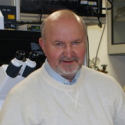Redox Stress and Redox Homeostatic Response to Trauma and Injury
A special issue of Antioxidants (ISSN 2076-3921). This special issue belongs to the section "Health Outcomes of Antioxidants and Oxidative Stress".
Deadline for manuscript submissions: closed (30 November 2014) | Viewed by 41109
Special Issue Editor
Interests: trauma; radiation injury; bacteria and host interaction; microvascular remodeling; redox signaling; autophagy; mitochondrial remodeling; interaction
Special Issues, Collections and Topics in MDPI journals
Special Issue Information
Dear Colleagues,
Prompt response to major trauma and injury includes a massive recruitment of numerous mesenchymal, reticuloendotelial, and endothelial precursor cells, along with inflammatory cells from the peripheral blood and the bone marrow in order to sustain the damage recovery. The pathogenesis of trauma/injury is also associated with numerous systemic abnormalities caused by (i) cardiopulmonary, vascular, and neurogenic shock; (ii) the rupturing, hemorrhaging, and edema of internal organs; (iii) progressive systemic hypotension and hypoxia; and (iv) the massive release of paracrine and autocrine factors (e.g., alarmins, DAMPs, nitric oxide, inflammatory cytokines, neurohumoral mediators), and the constituents of damaged cells that drive aseptic inflammation. These events can result in the redox stress, affect redox homeostasis, and suppress cell differentiation and proliferation; thus, these events can exacerbate tissue damage, promote the multiple organ dysfunction syndrome, and/or extend recuperation period in sequelae of the acute diseases.
The Special Issue’s aims and objectives are:
(i) to cover the assessment and integration of the following subjects:
- the interplay between the redox metabolome, redox signaling, and aseptic inflammation that is due to trauma/injury damage to organs and systems
- the advantages and limitations of experimental techniques (including in vitro models) and of the arrays of redox molecular sensors that are employed for assessing traumatic redox stress
(ii) to elucidate the role of “free radical” and “radical-free” mechanisms of redox stress and redox signaling, as well as the effects of antioxidants and other dietary factors in the pathogenesis of aseptic inflammation and post-traumatic recovery.
Prof. Dr. Nikolai V. Gorbunov
Guest Editor
Manuscript Submission Information
Manuscripts should be submitted online at www.mdpi.com by registering and logging in to this website. Once you are registered, click here to go to the submission form. Manuscripts can be submitted until the deadline. All submissions that pass pre-check are peer-reviewed. Accepted papers will be published continuously in the journal (as soon as accepted) and will be listed together on the special issue website. Research articles, review articles as well as short communications are invited. For planned papers, a title and short abstract (about 100 words) can be sent to the Editorial Office for announcement on this website.
Submitted manuscripts should not have been published previously, nor be under consideration for publication elsewhere (except conference proceedings papers). All manuscripts are thoroughly refereed through a single-blind peer-review process. A guide for authors and other relevant information for submission of manuscripts is available on the Instructions for Authors page. Antioxidants is an international peer-reviewed open access monthly journal published by MDPI.
Please visit the Instructions for Authors page before submitting a manuscript. The Article Processing Charge (APC) for publication in this open access journal is 2900 CHF (Swiss Francs). Submitted papers should be well formatted and use good English. Authors may use MDPI's English editing service prior to publication or during author revisions.
Keywords
- trauma/injury
- redox/oxidative stress
- redox metabolome
- redox sensors
- inflammation
- antioxidants






